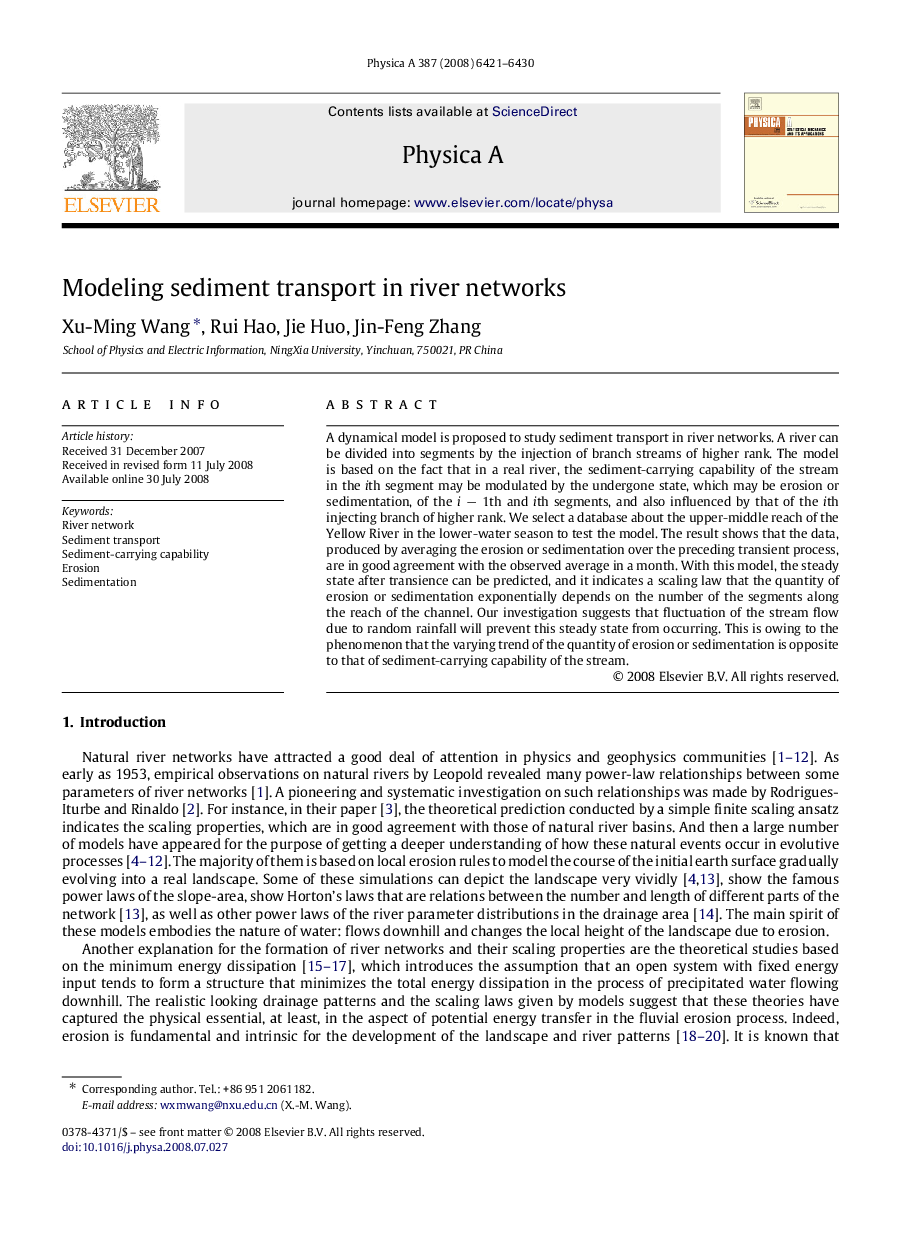| Article ID | Journal | Published Year | Pages | File Type |
|---|---|---|---|---|
| 977777 | Physica A: Statistical Mechanics and its Applications | 2008 | 10 Pages |
A dynamical model is proposed to study sediment transport in river networks. A river can be divided into segments by the injection of branch streams of higher rank. The model is based on the fact that in a real river, the sediment-carrying capability of the stream in the iith segment may be modulated by the undergone state, which may be erosion or sedimentation, of the i−1i−1th and iith segments, and also influenced by that of the iith injecting branch of higher rank. We select a database about the upper-middle reach of the Yellow River in the lower-water season to test the model. The result shows that the data, produced by averaging the erosion or sedimentation over the preceding transient process, are in good agreement with the observed average in a month. With this model, the steady state after transience can be predicted, and it indicates a scaling law that the quantity of erosion or sedimentation exponentially depends on the number of the segments along the reach of the channel. Our investigation suggests that fluctuation of the stream flow due to random rainfall will prevent this steady state from occurring. This is owing to the phenomenon that the varying trend of the quantity of erosion or sedimentation is opposite to that of sediment-carrying capability of the stream.
